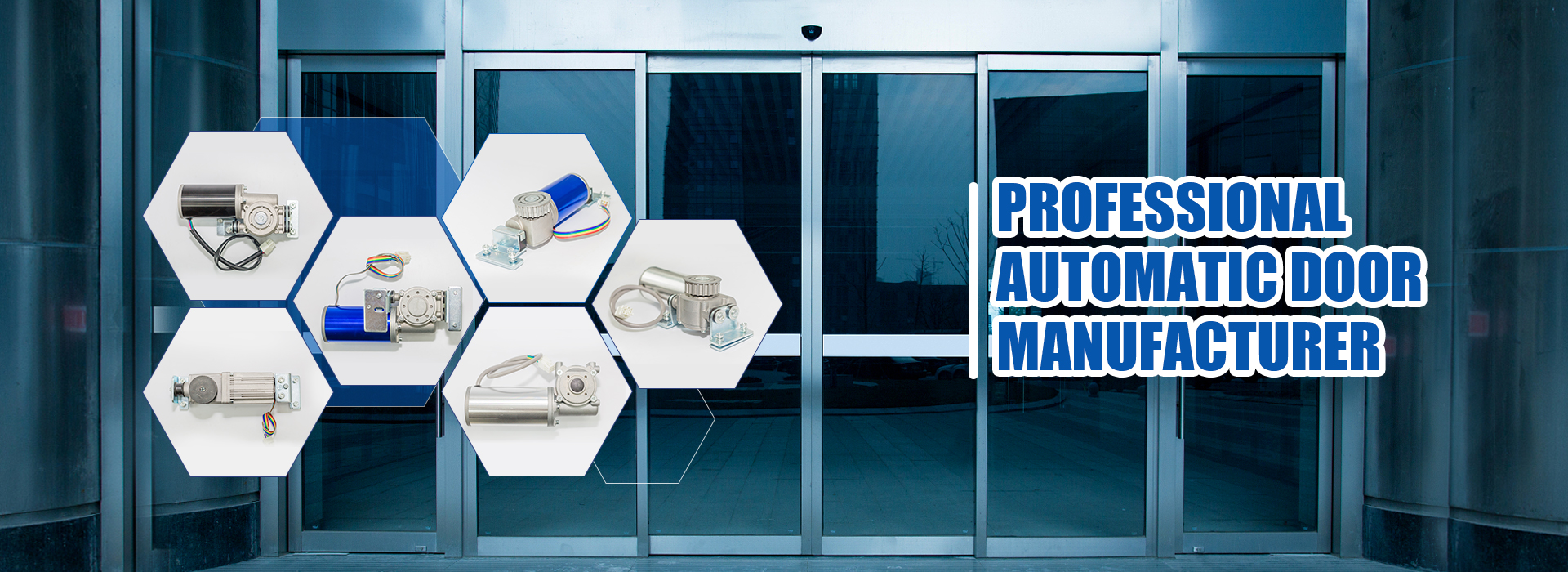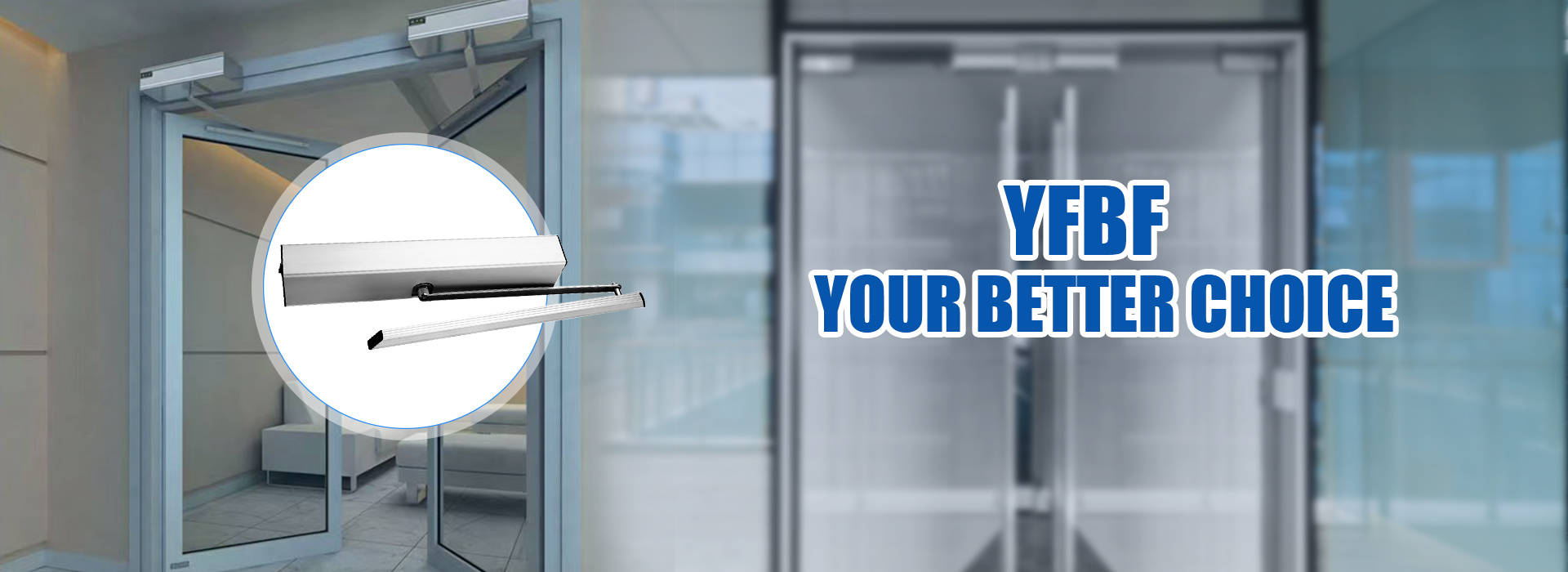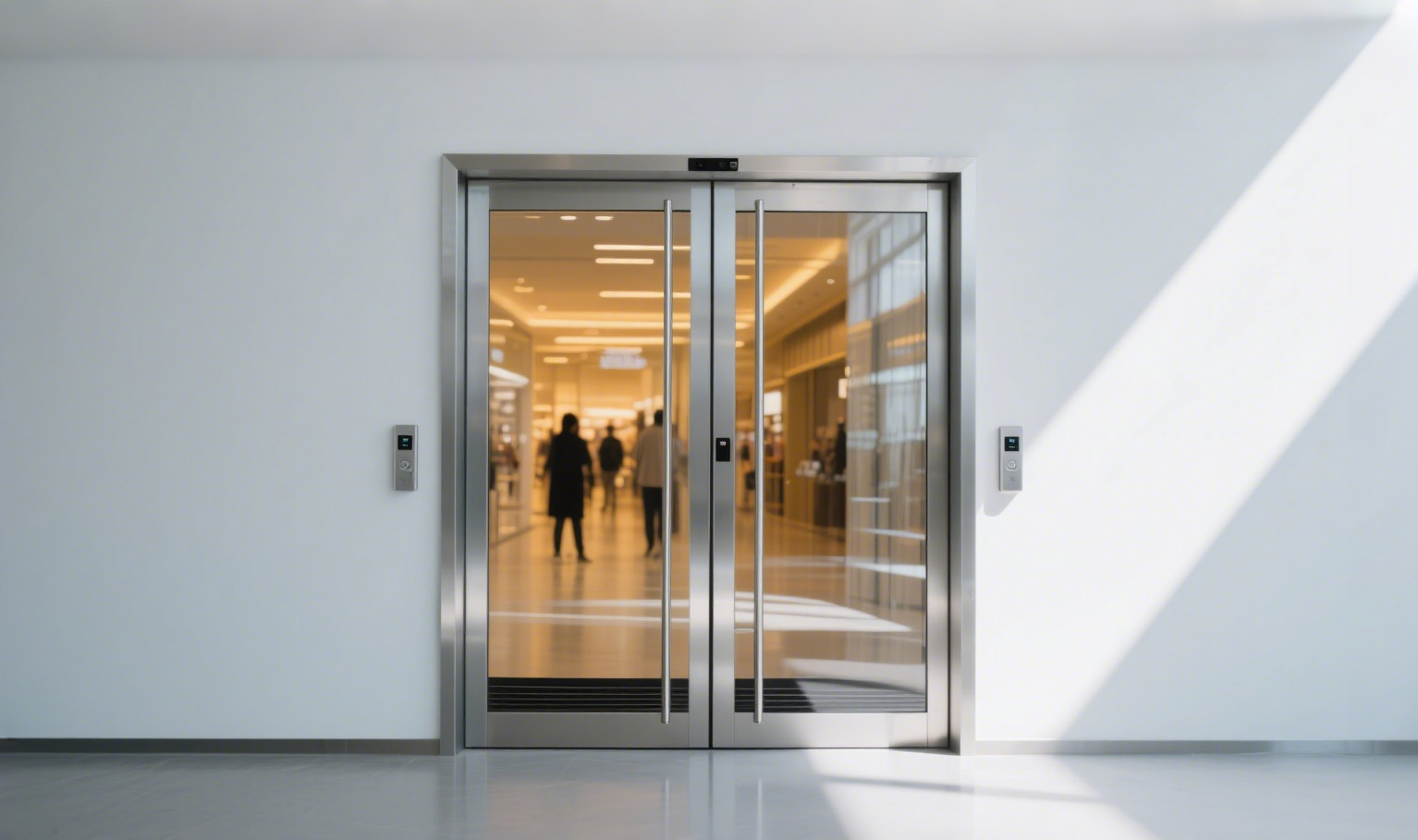
Picture a world where doors open with a wave—no more juggling groceries or wrestling sticky sliders. Automatic Door Motor technology brings hands-free entry to everyone. Children, seniors, and people with disabilities enjoy smooth, safe access thanks to intelligent sensors and ADA-friendly design. Daily routines become a breeze!
Key Takeaways
- Automatic door motors provide smooth, hands-free entry that makes daily life easier and safer for everyone, including children, seniors, and people with disabilities.
- These motors improve accessibility by offering multiple activation methods and meeting ADA standards, ensuring doors open gently and stay open long enough for safe passage.
- Automatic door motors enhance security and safety with smart locking systems, obstacle detection, emergency features, and easy maintenance to keep doors reliable and accident-free.
Automatic Door Motor for Effortless and Hands-Free Operation
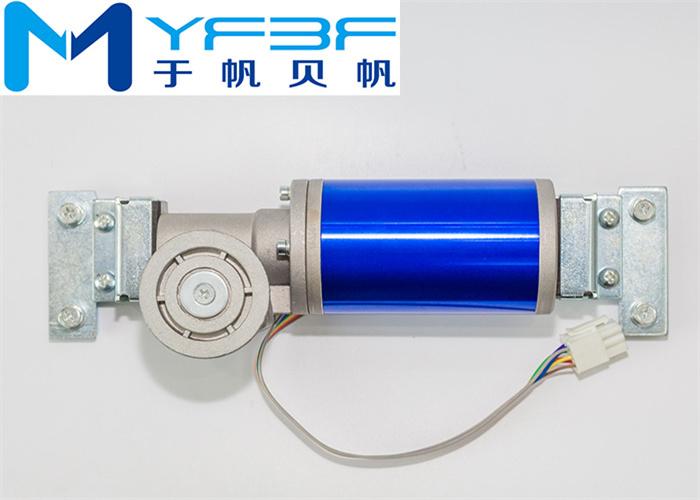
Smooth, Touchless Entry
Imagine a door that opens like magic. No pushing, no pulling, no sticky handles. People walk up, and the door glides open with a gentle hum. The secret? A clever combination of sensors and smart controls. These doors use motion sensors, infrared beams, and touchless triggers to spot anyone approaching. The motor control system manages speed and direction, so the door never slams or jerks. Safety features jump into action if something blocks the way, reversing the door to prevent accidents. Remote controls and electronic systems add even more convenience, letting users open doors with a click or a wave.
- Motor control system ensures smooth and quiet movement.
- Sensors detect presence or gestures for touchless operation.
- Safety features prevent accidents by reversing when obstacles appear.
- Remote and electronic controls offer easy access.
People in busy places—like hospitals, malls, and hotels—love this smooth entry. No more waiting or fumbling. The Automatic Door Motor turns every entrance into a welcoming experience.
Accessibility for All Users
Everyone deserves easy access. Kids with backpacks, parents pushing strollers, and seniors with walkers all benefit from automatic doors. These motors offer hands-free operation, so nobody struggles with heavy panels. Multiple activation methods—push buttons, motion sensors, pressure mats—make doors friendly for everyone. The control system keeps movement gentle and safe, while safety sensors stop the door from closing on anyone.
- Hands-free operation with sensors and buttons.
- Multiple activation methods for different needs.
- Control system ensures safe and efficient movement.
- Safety sensors and emergency opening features protect users.
Wheelchair users gain independence. They can use push plates at the right height, remotes attached to their chairs, or even voice commands. Adjustable timers keep doors open long enough for smooth passage. The Automatic Door Motor removes barriers and brings dignity to every entrance.
Tip: Wall-mounted push plates and touchless switches make doors easy for everyone, especially those with limited strength or dexterity.
ADA Compliance and Convenience
Automatic doors do more than open wide—they help buildings meet important accessibility standards. ADA rules require clear openings, gentle force, and safe timing. Automatic Door Motors reduce the force needed to just a few pounds, making doors easy for anyone to use. Sensors and controls ensure doors open fully within seconds and stay open long enough for safe passage. Proper installation provides enough space for wheelchairs and mobility aids.
- Minimum clear opening width of 32 inches.
- Maximum force to operate doors is 5 pounds.
- Doors open and close within three seconds, staying open for at least five seconds.
- Safety features stop doors from closing on users.
- Accessible actuator placement for easy reach.
These motors help overcome physical barriers, like sloped landings or narrow hallways, without expensive renovations. Employers meet civil rights requirements, and everyone enjoys safer, more convenient access. Regular maintenance keeps everything reliable and compliant.
Note: Automatic doors are recommended in places with elderly, disabled, or young children to boost convenience and safety.
Automatic Door Motor for Enhanced Security and Safety
Controlled Access and Locking
Security starts at the door. Automatic Door Motor systems transform sliding doors into smart guardians. They use access control systems like keypads, fob readers, and even biometric scanners. Only authorized people get inside. The door locks tight with magnetic force or dynamic braking, holding firm against curious kids or sneaky intruders. Rolling code technology changes the access code every time someone uses the door. This clever trick stops code grabbers in their tracks. Smart integrations let users check the door status from anywhere, sending alerts if someone tries to force entry.
Tip: Regular maintenance keeps sensors and locks working perfectly, so the door never lets in unwanted guests.
A table of common locking features:
| Locking Feature | How It Works | Benefit |
|---|---|---|
| Magnetic Lock | Uses strong magnets to hold door | Prevents accidental opening |
| Dynamic Braking | Electrically locks gear when closed | No need for extra hardware |
| Rolling Code | Changes code after each use | Stops code theft |
| Access Control | Keypads, fobs, biometrics | Only authorized entry |
| Backup Power | Battery keeps lock working | Security during outages |
Obstacle Detection and Accident Prevention
Sliding doors can be sneaky. Sometimes, they close when someone is still walking through. Automatic Door Motor systems use a team of sensors to keep everyone safe. Motion sensors, infrared beams, and light curtains scan for movement and objects. If a sensor spots a backpack, a pet, or a person, the door stops or reverses instantly. Photocells and roll-off sensors add extra layers of protection, especially in busy places.
- Safety sensors open doors from a distance and keep them open for obstacles.
- Photocells and light curtains stop or reverse doors if something interrupts the beam.
- Roll-off sensors watch the sides for sneaky obstacles.
- Advanced control systems use algorithms to make quick safety decisions.
Modern doors even use vision sensors and cameras to spot trouble. The system never gets tired or distracted. It keeps accidents away, making sliding doors safe for everyone.
Note: Touchless operation means fewer germs on handles, which helps keep hospitals and schools healthier.
Emergency Features and Quick Exit
Emergencies demand fast action. Automatic Door Motor systems switch to hero mode when trouble strikes. They offer dual operation—manual and electric—so doors open even if the power goes out. Backup batteries keep everything running during blackouts. Sensor-driven emergency stop systems halt the door if something blocks the way. Smart systems send alerts and let users control doors remotely, speeding up response times.
- Manual override lets people open doors during power failures.
- Battery backup keeps doors working in emergencies.
- Emergency stop sensors prevent accidents.
- Alarm integration locks down or opens doors during fires or security threats.
Regular checks and maintenance ensure these features work when needed. Real-world reports show fewer accidents and smoother evacuations after installing advanced motors and sensors. In a crisis, every second counts. These doors help everyone get out quickly and safely.
Alert: Always test emergency features during safety drills to make sure the door responds instantly.
Automatic Door Motor for Reliability and Problem Solving
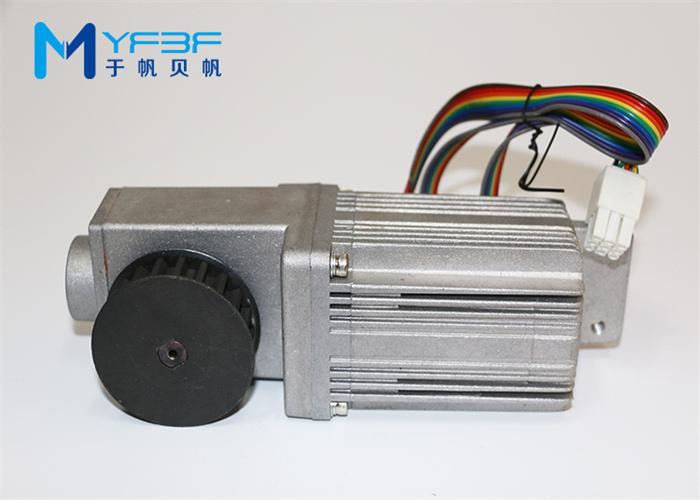
Fewer Breakdowns and Easy Maintenance
Nobody likes a door that stops working in the middle of a busy day. The Automatic Door Motor keeps things running smoothly with smart design and easy upkeep. Regular inspections, a little lubrication, and quick cleaning of sensors help spot small problems before they turn into big headaches. This approach means less downtime and fewer surprise repairs. The motor’s enclosed structure and advanced controls also make maintenance a breeze. No more crawling on the floor or wrestling with stubborn parts!
Tip: Schedule weekly safety checks and keep the area around the door clear. A clean track is a happy track.
A simple maintenance table:
| Frequency | Task |
|---|---|
| Daily | Test door movement and listen for noise |
| Weekly | Lubricate moving parts, check sensors |
| Monthly | Inspect wiring and control panels |
| Quarterly | Service drive mechanism and replace parts |
Fixing Sticking and Slow Operation
Sticky doors can ruin anyone’s day. Dirt, dust, or misaligned rails often cause slow or jerky movement. The Automatic Door Motor powers through these problems, but regular cleaning and a quick check of the tracks and rollers work wonders. Sometimes, a little oil or a belt adjustment brings back that smooth glide. If the door still drags or makes strange noises, a technician can check for worn parts or electrical issues.
- Clean tracks and sensors to prevent sticking.
- Lubricate rollers and moving parts for smooth sliding.
- Adjust belts and check voltage if the door moves slowly.
- Replace damaged components as needed.
Addressing Sensor and Alignment Issues
Sensors act like the eyes of the door. If they get dirty or knocked out of place, the door might not open or close right. Regularly wipe the sensors and make sure they face each other. Check the indicator lights—steady means good, flickering means trouble. If the door still acts up, a quick adjustment or a call to a technician solves most problems. Keeping sensors at the right height and tightly secured helps the Automatic Door Motor work its magic every time.
Note: Test the safety system by placing an object in the door’s path. The door should stop or reverse to keep everyone safe.
Upgrading to an automatic sliding door brings a world of perks.
- Effortless access makes life easier for everyone.
- Sensors boost safety and stop accidents before they start.
- Energy bills shrink as doors open and close quickly.
- Sleek designs add style and value to any space.
Why wrestle with sticky doors when smooth, hands-free entry awaits?
FAQ
How loud is an automatic sliding door motor?
Picture a cat tiptoeing across a carpet. That’s how quiet these motors run. Most people barely notice the gentle hum as the door glides open.
Can automatic sliding doors work during a power outage?
Yes! Many systems use backup batteries. When the lights go out, the door keeps moving. No one gets trapped—everyone escapes like a superhero.
Are automatic sliding doors safe for pets and kids?
Absolutely! Sensors spot tiny paws and little hands. The door stops or reverses if anything gets in the way. Safety comes first, even for furry friends.
Post time: Aug-12-2025

